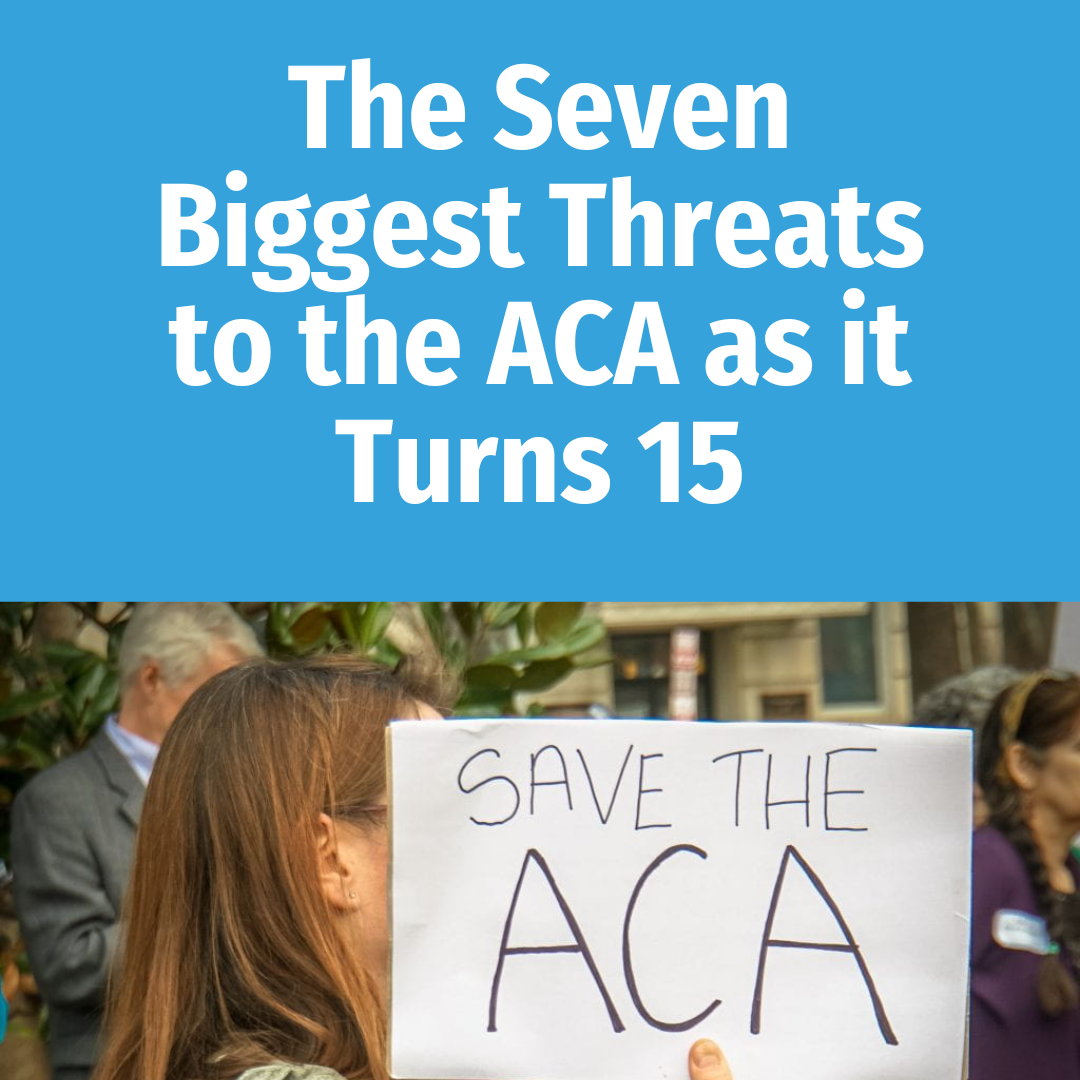Affordable Care Act (ACA)
The Affordable Care Act Provides Peace of Mind
The high cost of health coverage has been a historical barrier for many populations, with as many as 64% of uninsured nonelderly adults citing cost as the reason in 2022, according to a survey from KFF. Uninsurance is not only a deterrent to individuals seeking care because they fear a high price tag but can also quickly translate into medical debt. The rate of uninsured individuals has been declining in the last decade, reaching a record low of approximately 7.2% in 2022, thanks in no small part to the Affordable Care Act (ACA). Passed in 2010, the ACA opened the door to new opportunities for get affordable, high-quality, comprehensive health coverage — available to many for the first time in their lives.
The Affordable Care Act and Consumer Protections
By driving down the number of people who are uninsured and therefore helping them afford timely care the ACA helps to control costs for everyone, but the law doesn’t stop there. With its first-ever consumer protections which apply to all private health plans in the individual, small group, and large group markets, the ACA gives you and your family the peace of mind that comes from knowing that:
- You have financial protections if you face severe illness.
- If you have a pre-existing health condition, insurers can no longer drop you or refuse to cover you.
- You can stay on your parent’s plan until you turn 26.
- Insurers can’t charge higher premiums if you are a woman.
- Insurers can’t sell substandard plans that don’t pay for essential health care benefits.
The Essentials: Covered Care We All Need
Essential heath benefits (EHB) requirements ensure that everyone in the individual and small group health insurance markets has access to comprehensive coverage that covers the services they need. These essential health benefits fall into 10 categories:
- Ambulatory patient services (outpatient services)
- Emergency services
- Hospitalization
- Maternity and newborn care
- Mental health and substance use disorder services, including behavioral health treatment
- Prescription drugs
- Rehabilitative and habilitative services (those that help patients acquire, maintain, or improve skills necessary for daily functioning) and devices
- Laboratory services
- Preventive and wellness services and chronic disease management
- Pediatric services, including oral and vision care
Closing Coverage Gaps: Improvements in Medicare and Medicaid
Through the ACA came Medicaid expansion, which extended eligibility — provided states agree to accept federal funding and take up enhanced federal funding — now including low-income adults under the age of 65, and adults without independent children for the first time ever. This expansion for adults up to 138% of the federal poverty level (FPL) was a huge step forward in closing the coverage gap.
Nearly 20 million people across the United States currently get help paying for their health coverage through premium tax credits (also known as advance premium tax credits, or APTCs). These subsidies are a lifeline that helps individuals and families to purchase a plan through the health insurance marketplaces. Congress has acted to bolster the amount of assistance available in recent years, increasing the premium tax credit amounts under the American Rescue Plan Act (ARPA) and extending those enhancements under the Inflation Reduction Act (IRA). APTCs are having a profound impact in many areas of the country, with metrics differing state-by-state. Learn more by reviewing our fact sheets for both national and state-specific metrics.
Coverage Gains
Historical gains in coverage have been seen in part due to the reduction of health care costs and due to ACA coverage implementations and to health insurance subsidies, such as APTCs. Uninsurance rates in minority populations have plummeted over the course of a decade in the following groups:
- Black Americans: 20.9% to 10.8%
- Latinos: 32.7% to 18%
- Asian Americans, Native Hawaiians and Pacific Islanders (AANHPI): 16.6% to 6.2%
- American Indians and Alaska Natives (AI/AN): 32.4% to 19.9%
These improvements demonstrate the continued momentum toward greater health equity for all living in the United States.
The coverage gap for prescription drugs through Medicare part D also began to close as a result of the ACA, with coverage for both brand and prescription drug coverage increasing over time, reducing the size of what has long been called the “donut hole.” The “donut hole” was a temporary gap in coverage wherein a beneficiary would essentially run out of drug coverage and would therefore have to pay all costs out-of-pocket until they reached a yearly limit. Once that limit was reached, coverage kicked back in and the part D plan begins to once again pay for prescriptions.
As a provision of the ACA, plans were required to pay a gradually larger share of total drug costs and required drug manufacturers to provide a 50% discount on price of brand name drugs. Since this was enacted in 2011, the “donut hole” was gradually closing over the decade and was eliminated completely in 2020.
The Health Insurance Marketplace Is the Foundation of The Affordable Care Act, And It Needs To Work Well
Health care marketplaces are the foundation of the health care law, and we work with advocates around the country to ensure that the marketplaces are implemented with consumers in mind and that the consumer experience in the health insurance marketplaces is a positive one.
We must remain committed to building upon the successes of the ACA. This landmark law has improved the health of all many populations, including women and families, kids, older adults, people with disabilities, LGBTQI+ and communities of color. Thanks to the ACA, millions have gained health coverage without limits, and protections are in place for people with preexisting conditions. People have access to essential health benefits, including preventive and rehabilitative care, prescription drugs, wellness visits and contraceptives, mental health and substance use treatment, among many others.

Holly H., Kentucky
Holly’s entire family, including herself, her husband, 11-year-old daughter and 19-year-old stepso... read more
key resources

The Seven Biggest Threats to the ACA as it Turns 15
03.20.2025 / Insights Column

Prioritizing Mental Health Means Ensuring Comprehensive Coverage and Services
09.26.2024 / Insights Column

Families USA’s Comments on Notice of Benefit and Payment Parameters for 2026
11.14.2024 / Comment


